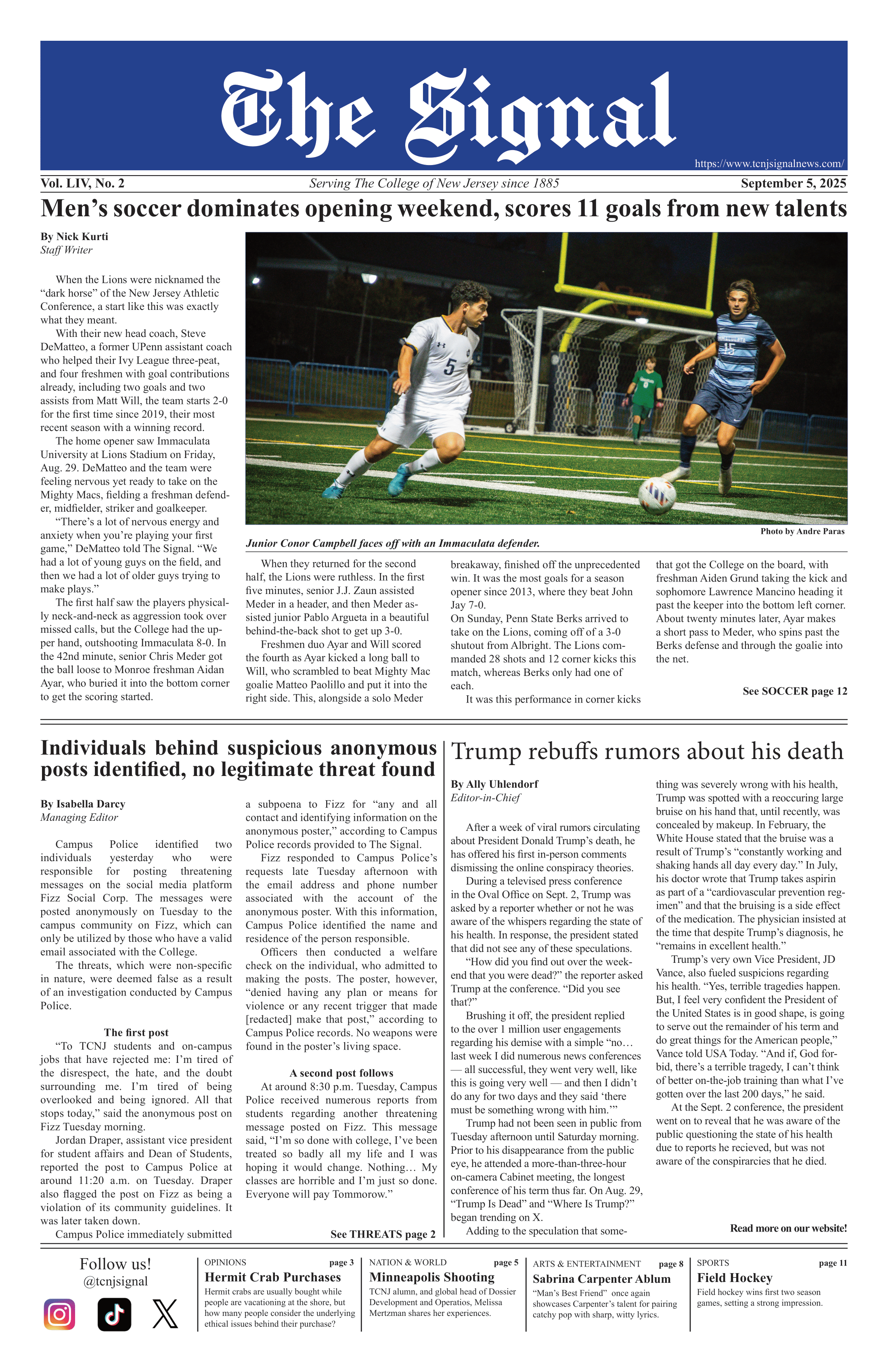Teresa Nakra, professor of music, dubbed the process of utilizing technology to produce music "iConduct," during a lecture in Holman Hall on Halloween.
These interactive conductors are tools such as a baton with built-in sensors that interpret a conductor's movement to create music digitally. Nakra has helped to design several types of interactive conductors both during and after her graduate work. This style of conducting features no live instruments - everything is generated by the conductor and computer.
To understand interactive conducting, Nakra introduced the audience to the concept of musical expression. Musical expression is the way human players react to the flow of the song and give it personality, and where the conductor adds to the performance. Technology is quickly gaining ground on human conductors.
"What are conductors, they're just waving their hands up there," Nakra said.
To demonstrate this shift, Nakra played two clips of an identical piece of music where one was conducted using humans and one was conducted interactively and asked the audience to determine which was which. In this case the audience guessed correctly; but in another poll of eminent researchers and conductors many of them actually failed a similar test, lending weight to the idea that interactive conducting is matching human conducting in terms of bringing emotion into play.
Nakra also demonstrated that conductors have physiological changes as they conduct. A study was done where famous Austrian conductor Herbert von Karajan was wired to detect his heart and pulse rates while performing two tasks - conducting and performing stunts with a jet aircraft. The studies found that while conducting Karajan had a much more elevated and a far more varied heart rate versus the time he spent piloting his aircraft.
While performing graduate work, Nakra was further intrigued by the idea of interactive conducting. "I studied conducting . but I thought 'what would it be like conducting in a digital age?'" she said. Exploring this outlet, she moved away from her earlier work involving the digital baton to a more comprehensive device called the conductor's jacket. During this time Nakra worked closely with Keith Lockhart, conductor of the Boston Pops Symphony Orchestra.
Lockhart was fitted with the conductor's jacket, which measured his heart rate, muscle contractions and overall movements that were transformed into sine waves and recorded. Nakra found a link between Lockhart's facial expressions and muscle movements in the experiment.
In 2001 Nakra conducted a performance at the Boston Cyberarts Festival using bicep and forearm sensors. The right bicep controlled the tempo, the right forearm controlled the high-voiced instruments, the left bicep controlled the overall volume and the left forearm controlled the low voiced instruments. Every contraction and movement of a certain part of her arm resulted in her digital orchestra acting accordingly.
From 2000-2004 Nakra worked with Arizona State University, developing technology that allowed student conductors to practice their techniques using a digital orchestra, which improved the skills of the participants.
Currently Nakra is involved in an ongoing program in Boston where her interactive conducting technology is used by children to control the tempo and effectively "conduct" a clip of the Boston Pops.






